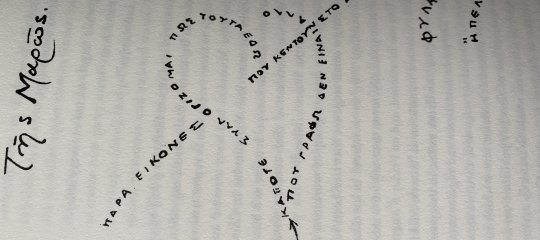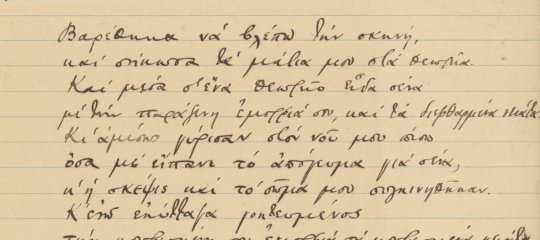How does Seferis’ mythical method interact with Greece’s lasting socio-political issues?
Hannah Cage, second year Classics undergraduate
Supervisor: Dr Dimitra Tzanidaki-Kreps
University of Reading
Mythistorema, published in 1935, suggests by its very title a blending of myth and history. Throughout the parts of the poem the idea of a journey is a crucial and enduring theme. The first poem evokes this with the idea of looking for the ‘first seed’1. This may be linked with the search for Greek identity, particularly within the ‘Thirties Generation’ which Seferis was a part of, seeking ‘Hellenic Hellenicity’2. This meant a Greek identity which was an assimilation of Classical Greece right up until the present, rather than the Western and Renaissance-based ideal of Greece which essentially discounted anything after the Classical period. This idea of Greek culture as a synthesis can be seen in symbol of the angel in the opening line of the poem3, which is arguably a cross-cultural symbol as angelos in Greek can mean both the
messenger of ancient Greek tragedy and the angel within the Christian tradition4. In this way, Seferis incorporates elements of Greek culture across time which, combined with the idea of a journey, suggests a trajectory towards finding a true Greek identity. However, there is an underlying pessimistic and foreboding tone at the end of the first section, where the narrator and his companions ‘travelled towards the north, strangers plunged into the mist of the immaculate wings of swans that wounded us5. It may be suggested here that, in searching for remnants of ancient Greece from Northern Europe (and its rigid, Western perceptions), actual Greeks find themselves isolated from their true identity and made outsiders6. In this sense, the opening of Mythistorema comments upon contemporary ideas of Greekness, and criticises Western ideals of Greece.
- Εισέλθετε στο σύστημα για να υποβάλετε σχόλια










